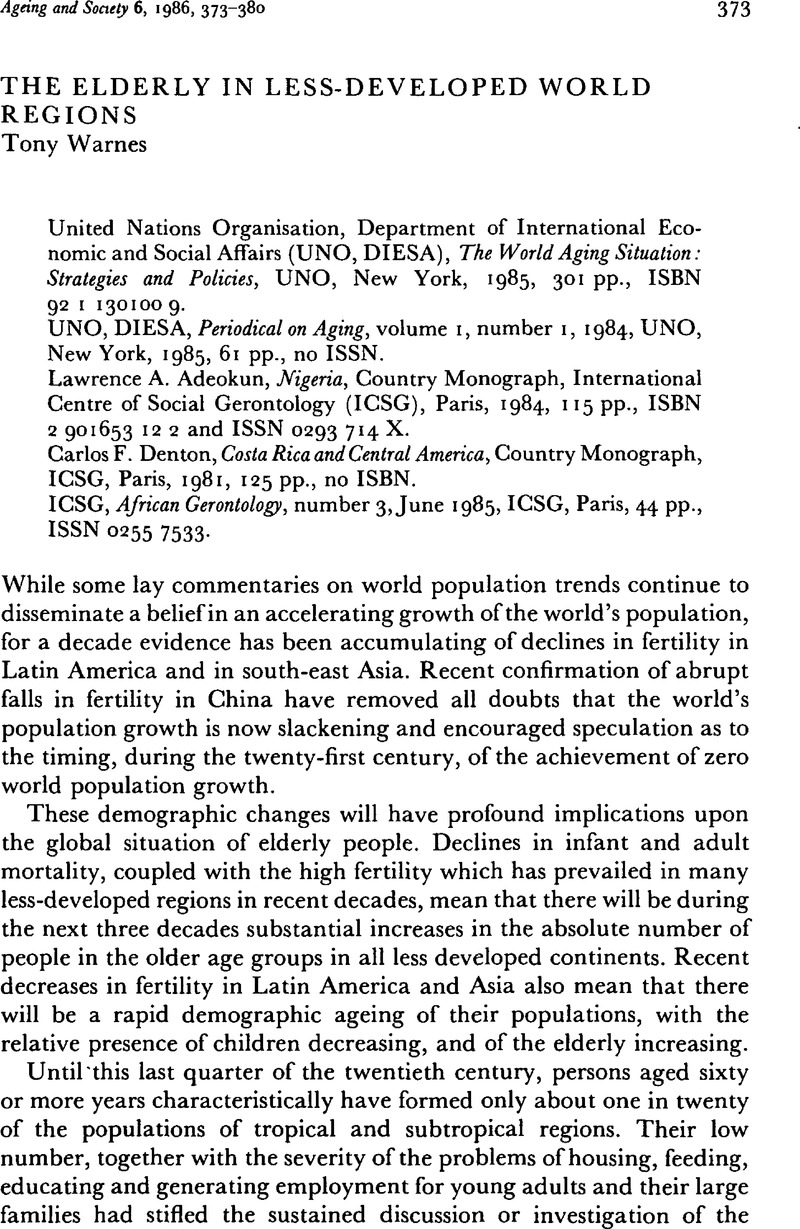Published online by Cambridge University Press: 14 November 2008

1 Coale, A. J. and Demeny, P.Regional Life Tables and Stable Populations, Princeton University Press, Princeton, 1966.Google Scholar
2 Benjamin, B. and Overton, E.Prospects for mortality decline in England and Wales, Population Trends, 23 (1981), 22–28.Google Scholar
3 Myers, G. C. ‘Aging and worldwide population change’, in Binstock, R. and Shanas, E. (eds), Handbook on Aging and the Social Sciences, 2nd edn.Van Nostrand, New York, 1985.Google Scholar
4 The volumes to hand for review are: Adeokum, L. A., Nigeria, 1984Google Scholar; Denton, C. F., Costa Rica and Central America, 1981Google Scholar; Ford, B., Australia, 1981Google Scholar; Hobman, D., Great Britain, 1981Google Scholar; Mori, M., Japan, 1980Google Scholar; Quaresma, B., Portugal, 1980Google Scholar; and Szwarc, H., Poland, 1983.Google Scholar
5 Adegabo, S. A., ‘Institutional care of the aged: a study of a Lagos City institution for the aged’, Nigerian Behavioural Science Journal, 1 (1978), 150–61Google Scholar; Odekunle, F. F., ‘Nigeria's social welfare services: past, present and future’, Nigerian Behavioural Science Journal, 1 (1978), 174–93Google Scholar; Olusanya, P. O., ‘Population growth and its components: the nature and direction of population change’, in Caldwell, J. G. (ed.), Population Growth and Socio-Economic Changes in West Africa, Columbia University Press, New York, 1975, pp. 251–74Google Scholar. For a review of the recommendations adopted by the African Conference on Gerontology held in Dakar in 1984, see Blakemore, K., Ageing and Society, 6 (1986).CrossRefGoogle Scholar